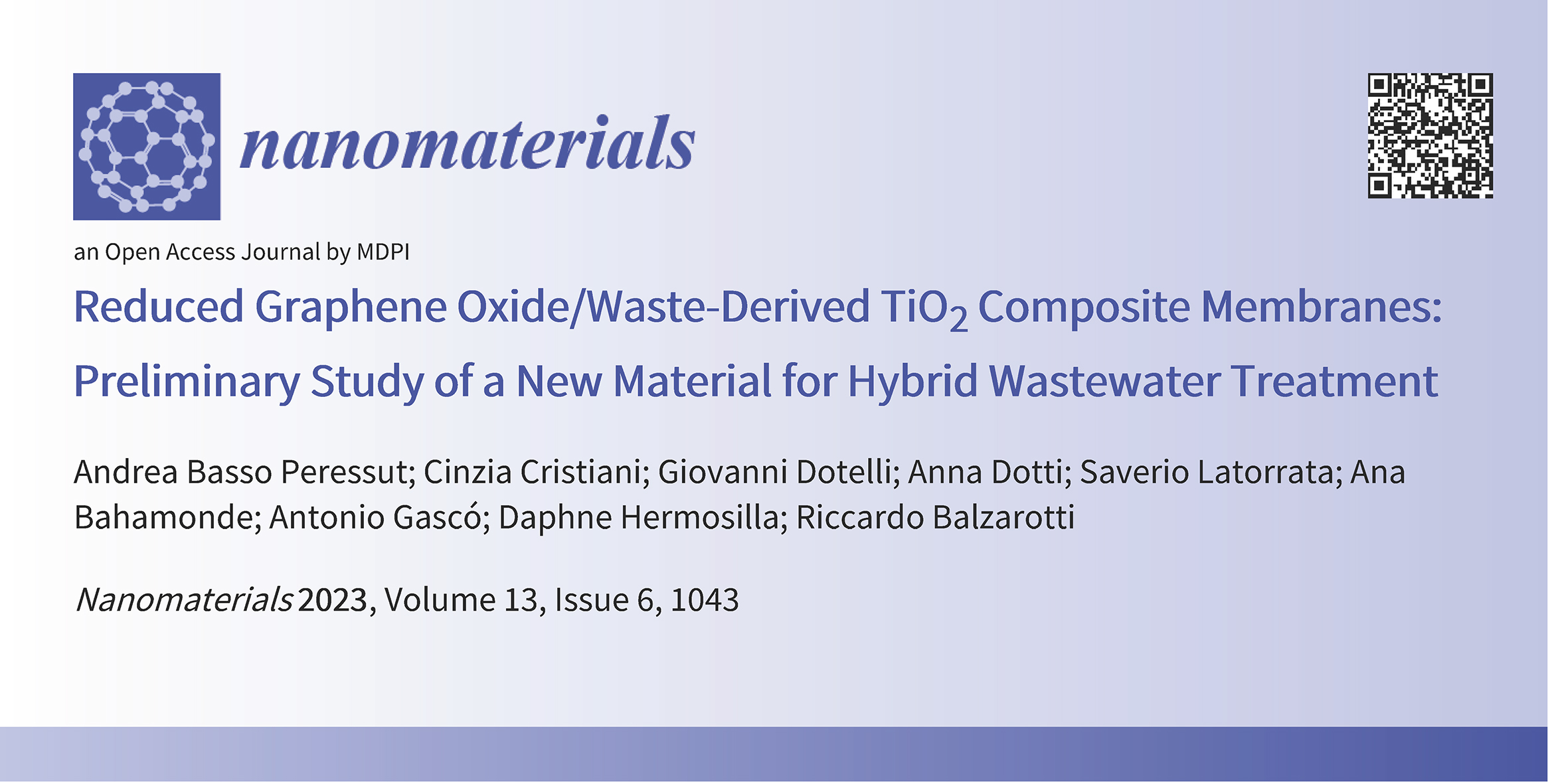A. Basso Peressut, C. Cristiani, G. Dotelli, A. Dotti, S. Latorrata, A. Bahamonde, A. Gascó, D. Hermosilla, R. Balzarotti
Nanomaterials, 13(6) (2023), 1-21
https://doi.org/10.3390/nano13061043
This work reports the preliminary results of the development of composite self-assembling membranes obtained by the combination of reduced graphene oxide (rGO) with commercial Degussa P25 titanium dioxide (TiO2). The purpose is to demonstrate the possibility of combining, in the same self-standing material, the capability to treat wastewater containing both inorganic and organic pollutants by exploiting the established ability of rGO to capture metal ions together with that of TiO2 to degrade organic substances. Moreover, this study also investigates the potential photocatalytic properties of tionite (TIO), to demonstrate the feasibility of replacing commercial TiO2 with such waste-derived TiO2-containing material, fulfilling a circular economy approach. Thus, rGO–TiO2 and rGO–TIO composite membranes, 1:1 by weight, were prepared and characterized by SEM-EDX, XRD, thermogravimetry, as well as by Raman and UV-Vis spectroscopies to verify the effective and homogeneous integration of the two components. Then, they were tested towards 3-mg L−1 aqueous synthetic solutions of Fe3+ and Cu2+ ions to evaluate their metal adsorption ability, with values of the order of 0.1–0.2 mmol gmembrane−1, comparable or even slightly higher than those of pristine rGO. Finally, the ability of the composites to degrade a common organic pesticide, i.e., Imidacloprid®, was assessed in preliminary photocatalysis experiments, in which maximum degradation efficiencies of 25% (after 3 h) for rGO–TiO2 and of 21% (after 1 h) for rGO–TIO were found. The result of tionite-containing membranes is particularly promising and worthy of further investigation, given that the anatase content of tionite is roughly 1/6 of the one in commercial TiO2.

